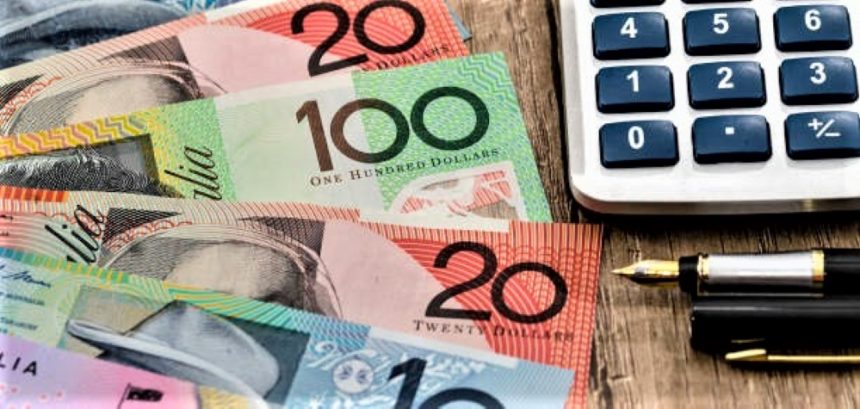The Australian Dollar (AUD) held steady in early Asia on Monday, consolidating its position after recent losses as traders await key inflation data and progress in global trade negotiations. While broader market sentiment remains upbeat following a breakthrough US-EU trade deal, the cautious tone ahead of US-China tariff talks and the upcoming Q2 Consumer Price Index (CPI) release from Australia has kept traders from making bold bets on the AUDUSD pair.
US-EU Trade Deal Fuels Risk Appetite But Australian Dollar Reaction Muted
The week began with encouraging news for global markets. The United States and European Union announced a comprehensive trade framework over the weekend that ends months of tension and sets in motion 15% tariffs on most European goods, effective August 1. While tariffs are still in place, the deal represents a mutual understanding that diffuses the potential for escalation and sends a strong signal of multilateral cooperation.
The news lifted risk appetite across global markets, helping to bolster risk-sensitive currencies like the Australian Dollar. The AUDUSD pair bounced modestly from last week’s lows, reflecting positive investor sentiment. However, the movement remained contained.
Why?
Because investors remain reluctant to push AUD significantly higher without clarity on two major fronts:
1. The direction of US-China trade relations, with key talks scheduled this week.
2. The Q2 Australian CPI report, due Wednesday, which could determine the Reserve Bank of Australia’s (RBA) next policy move.
US-China Tariff Truce Extension Could Benefit AUD
According to sources cited by the South China Morning Post, the US and China expected to extend their current tariff truce by another three months. While no formal deal has been signed, expectations are building ahead of a pivotal meeting between US Treasury Secretary Scott Bessent and Chinese Vice Premier He Lifeng, set to take place in Stockholm on Monday.
Markets are pricing in optimism. The two nations had been under immense pressure from industry groups and global institutions to avoid reigniting trade hostilities. Any positive development would benefit the Australian economy, which has deep export ties to China. Australia ships a vast majority of its iron ore, coal, and agricultural products to China, making the Australian Dollar highly sensitive to developments in the Chinese economy and Beijing’s trade policy.
If the tariff truce is indeed extended, and communication channels remain open, the AUD could see renewed demand in the coming days.
Focus Turns to Australian Q2 CPI Report
The Australian Q2 CPI data, due for release on Wednesday, is widely viewed as a key determinant for the Reserve Bank of Australia’s upcoming interest rate decision. RBA Governor Michele Bullock reiterated last week the central bank’s commitment to bringing inflation back to target and keeping financial conditions conducive to long-term stability.
The June quarter CPI is expected to show a continued, albeit gradual, decline in inflation. Analysts forecast a headline annual rate of 3.2%, down from 3.6% in Q1. The trimmed mean CPI – a core inflation measure closely watched by the RBA – is expected to fall to 3.4% year-over-year, from 4.0% in the previous quarter.
A softer-than-expected print could give the RBA leeway to cut interest rates in the coming months. Conversely, sticky inflation would validate the RBA’s cautious approach and diminish expectations for imminent rate relief.
The stakes are high. The RBA has kept rates on hold at 4.35% since last November, waiting for concrete evidence that inflation is sustainably retreating. A significant miss in the CPI data could either re-ignite dovish bets or challenge market complacency.
RBA Minutes Hint at Deliberate Policy Approach
Minutes from the RBA’s most recent policy meeting revealed a board that remains concerned about cutting rates too quickly. Most members felt that three rate cuts in four meetings would be inconsistent with the “cautious and gradual” strategy the RBA is committed to. The board agreed that more cuts are likely “over time,” but only if inflation slows further.
This forward guidance means the Q2 CPI could directly shape expectations for the September meeting. Market pricing currently reflects just a 20% chance of a rate cut by September, according to futures data. However, that could swing sharply based on Wednesday’s numbers.
US Dollar Faces Headwinds Amid Mixed Data and Fed Uncertainty
The US Dollar Index (DXY) continues to drift lower, trading around 97.60, marking its third consecutive day of losses. A combination of stronger risk sentiment and shifting expectations around the Federal Reserve’s rate path have kept the Greenback on the back foot.
Last week’s Initial Jobless Claims report came in at 217,000, down from 227,000 the previous week. This was the sixth straight weekly decline – a streak not seen since 2022 – highlighting the underlying resilience in the labor market.
Moreover, the S&P Global US PMI readings showed mixed results. The Composite PMI climbed to 54.6, its strongest level in seven months, led by a strong Services PMI print at 55.2 (vs. expectations of 53.0). However, the Manufacturing PMI slipped into contraction at 49.5, missing forecasts and raising concerns about manufacturing-led weakness.
Fed Commentary Reveals Diverging Views
The market remains uncertain about the Fed’s next move. Policymakers have given conflicting signals:
Fed Governor Adriana Kugler cautioned that rate cuts should be delayed, citing rising prices linked to Trump-era tariffs.
San Francisco Fed President Mary Daly maintained that two cuts in 2025 is a “reasonable” expectation, but warned against acting too late.
Fed Governor Christopher Waller, on the other hand, believes the Fed should consider a rate cut at the July meeting, suggesting confidence in inflation moderation.
US Treasury Secretary Scott Bessent added more intrigue by suggesting that a new Fed Chair nominee could be announced in December or January, implying that Fed leadership could be reshuffled under the incoming administration. The uncertainty around Powell’s succession may also weigh on market confidence.
Global Risk Sentiment Improving, Supporting AUD Stability
Despite the looming risks, overall global sentiment has turned more constructive:
The US-EU trade pact eased fears of another protectionist flare-up.
US-China talks, while still ongoing, offer hope for stability.
Central banks, including the RBA and Fed, are leaning toward data-dependent easing – a scenario that reduces monetary policy volatility.
This shift has supported high-beta currencies like the AUD, although conviction remains weak until more concrete data emerge.
Technical Analysis: AUDUSD Eyes Resistance Near 0.6620
Technically, the AUDUSD pair is consolidating near 0.6590, slightly below the eight-month high of 0.6625 reached last week. Immediate resistance lies at 0.6620, with a breakout potentially opening the door to 0.6680 and 0.6725.
Support seen around 0.6540, followed by a stronger floor at 0.6500. A break below that would suggest a deeper correction toward 0.6450, a key medium-term pivot.
Momentum indicators on the daily chart suggest consolidation rather than a decisive trend, aligning with the cautious sentiment in global markets.
Conclusion: Cautious Optimism Keeps AustralianDollar Range-Bound for Now
While the Australian Dollar is benefitting from improved global sentiment and optimism about trade diplomacy, traders are not willing to take aggressive positions ahead of key domestic data and geopolitical outcomes. The US-China trade talks and Australian Q2 CPI data will be decisive events this week.
If trade risks ease further and Australian inflation shows signs of moderation, the Australian Dollar could resume its upward trajectory. On the other hand, disappointing CPI or a trade flare-up could push AUDUSD back toward support levels.
With crosscurrents from Fed policy, US politics, Chinese demand, and RBA strategy all converging, the AUD is likely to remain range-bound in the short term – but the breakout potential in either direction remains strong.
Disclaimer: This blog is for informational purposes only and does not constitute financial advice. Always conduct your own research and consult a professional advisor before making investment decisions.
[sc_fs_multi_faq headline-0=”h2″ question-0=”What technical levels should traders watch in AUD/USD?” answer-0=”Key resistance is at 0.6620, followed by 0.6680. Support lies at 0.6540 and then 0.6500. The pair is currently range-bound, with a breakout contingent on upcoming data and trade developments. ” image-0=”” headline-1=”h2″ question-1=”What is the RBA’s current policy stance?” answer-1=”The RBA remains data-dependent and cautious. Its recent minutes suggest that further rate cuts are likely but only when inflation convincingly falls toward the 2–3% target range.” image-1=”” headline-2=”h2″ question-2=”Why is the Australian Dollar not rising despite risk-on sentiment?” answer-2=”The AUD is holding steady as traders await confirmation of US-China trade progress and the upcoming Australian inflation data. While sentiment is positive, uncertainty limits upside movement.” image-2=”” count=”3″ html=”true” css_class=””]









